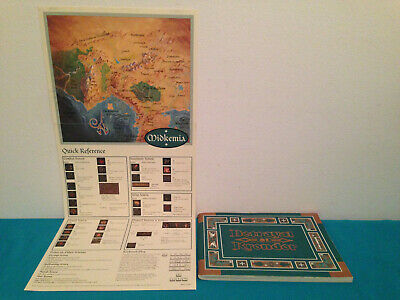
Just as "Betrayal at Krondor" had moredhel wordlock chests, "Betrayal in Antara" has lever chests and beadlock chests. Compared to "Betrayal at Krondor", "Betrayal in Antara" is more linear and restricted in where the player can travel. While traveling between towns, the party camps in the wilderness to rest and recover lost health/stamina. The player is generally allowed to explore the world how they wish, but only certain locations are accessible in each chapter.
Betrayal at krondor map full#
The player also has the option to automatically mark shops, inns, temples, NPCs, chests, and other objects on the overhead map and full map of Ramar. The map view stays put while the player direction marker moves around when the player reaches the edge of one map section, the next is automatically loaded. The game has two possible views, the 3D view and the 2D overhead map view, where the player is represented by a circular arrow marker. Exploration occurs mainly from a first-person view but switches to a third-person view during combat. Aside from the overworld, there are also various dungeons and caves to explore. Most gameplay happens in the 3D view of the game world. The game models illumination to a certain extent: In the overworld, day and night are modeled, and in underground locations, the player needs to use a torch or light spell to illuminate the surroundings. In combat and puzzle screens, all characters are animated. Character, NPC, and some monster art is based on hand-drawn images. Shops, inns, temples, special locations, and large cities are done as pictures usable through hotspots. The graphics engine uses textured 3D graphics to draw the terrain and uses sprites for most detailed objects.
Betrayal at krondor map windows#
The game runs in 256-color 640x480 Super VGA mode within Windows 3.1. Although not a sequel, "Betrayal in Antara" uses an updated version of "Betrayal at Krondor"'s game engine.Īs "Betrayal in Antara" uses an updated version of "Betrayal at Krondor"'s game engine with some modifications, gameplay is largely the same.


However, Sierra had lost the rights to produce another game based on Raymond Feist's Midkemia universe, and therefore had to create a new game world, Ramar. "Betrayal in Antara" is a Windows 3.1 computer role-playing game developed and published by Sierra On-Line in 1997, after the success of their previous RPG, " Betrayal at Krondor". Requirements = Intel 486 100 MHz CPU, 16 MB RAM, 4X CD-ROM drive, 20 MB available hard disk space, Windows 3.1


 0 kommentar(er)
0 kommentar(er)
